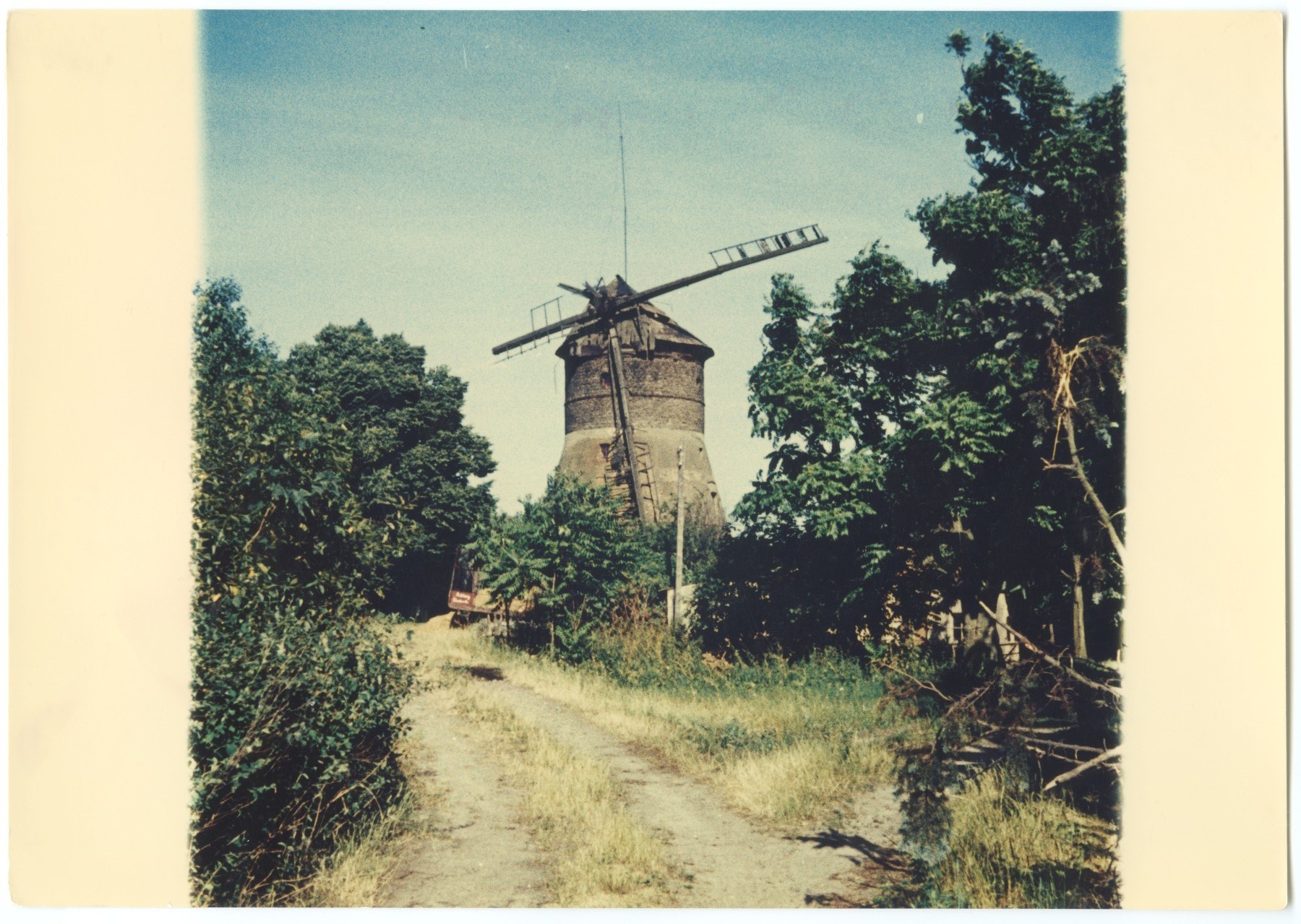Die Turmholländerwindmühle wurde 1868 von Friedrich Kettlitz auf einer Anhöhe oberhalb des Städtchens Baruth erbaut. Zuvor gab es eine Bockwindmühle, die 1867 abbrannte. Ab 1921 gab es einen kombinierten Antrieb mit Wind und elektrischem Strom, ab 1935 alleinig nur mit Strom. Die Familie Kettlitz betrieb die Mühle bis ca. 1959. Neben der Getreidemühle wurde der Standort auch für eine Ölmühle und ein Sägewerk genutzt. Im Mühlenturm ist ein Teil der Technik zur Getreideverarbeitung erhalten. Die Mühle steht unter Denkmalschutz (Denkmaldatenbank - OBJ-Dok-Nr.: 09105263).
In Baruth/Mark machte Bernd Maywald diese Aufnahmen der 1868 als Turmholländer mit Galerie erbauten Mühle.
Die Farbaufnahme wurde mit 09.07.1973 datiert. Die s/w-Aufnahme und der Kontaktbogen der 6 x 6 cm Mittelformatnegative sind hingegen auf Juni 1990 datiert.
en

